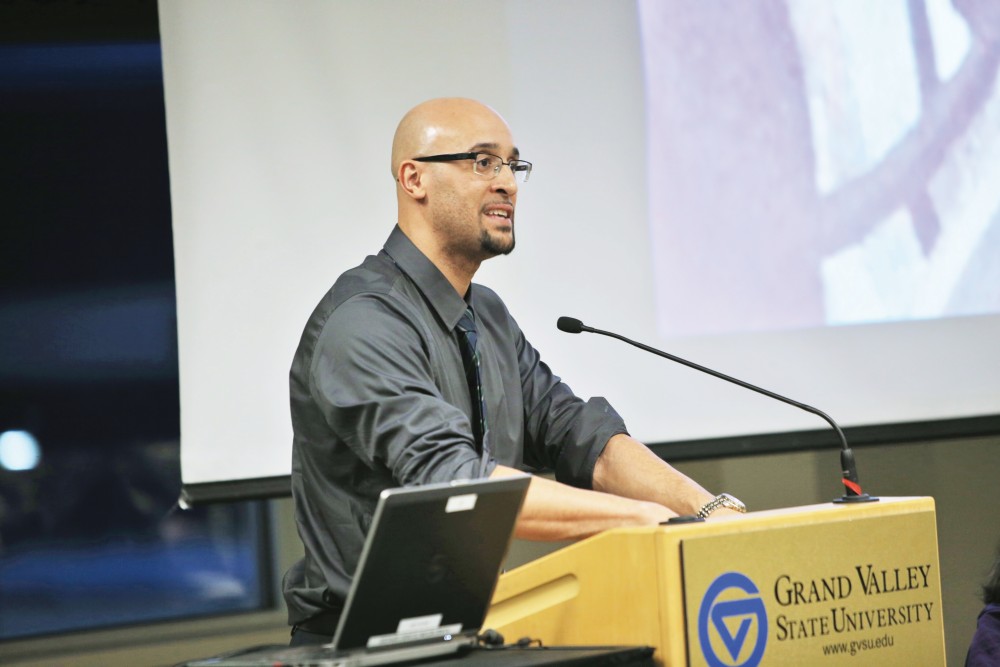Less than 4 percent of GVSU faculty are African American

GVL/Kevin Sielaff Louis Moore
Dec 10, 2015
Amid the controversy concerning the lack of response to racist incidents from officials at the University of Missouri, students at Mizzou have made demands for the institution to increase its black faculty to 10 percent by the 2017-18 academic year.
At Grand Valley State University, the latest data from 2014 showed that only 3.8 percent of all faculty members were black. With the University of Missouri in mind, students and faculty members at GVSU are also calling for an increased representation of black faculty members.
Jasmin Newton, a junior studying criminal justice, is in her first semester at GVSU since transferring from Michigan State University. As a black student on a predominately white campus, Newton said an increase in black faculty would create a more comfortable atmosphere.
“I just think being in an environment where more people are like you and look like you makes everyone feel a little bit more comfortable,” Newton said. “Not saying that diversity or mixture among other cultures is not important or uncomfortable – it’s just nice to know others like you are around you and near.”
According to research done by the GVSU Office of Institutional Analysis, black students account for 5.2 percent of the student population – higher than the faculty’s 3.8 percent.
Louis Moore, professor of African American studies, agreed that an increase in black faculty at GVSU would help black students to succeed better on campus.
“We should focus on making those opportunities to hire more diverse faculty and support them because our students want to feel like they can see somebody like themselves,” Moore said. “If we are bringing kids who are coming from environments that are 90 to 100 percent black and then dropping them in an environment that’s 90 percent white, you have to have something there for them.”
In comparison to other universities within Michigan, representation of black faculty at GVSU is more or less the same. GVSU has been continuing to increase this representation since 2006 in which black faculty accounted for 3 percent.
However, black citizens represent 14.2 percent of the state of Michigan’s population.
Jesse Bernal, vice president for the Division of Inclusion of Equity at GVSU, recognizes that representation among Michigan colleges and universities – including GVSU – has yet to match.
In an effort to create a more inclusive campus community, the Division of Inclusion and Equity has been combatting the diversity issue alongside fellow student and faculty organizations.
“Inclusion and Equity has and will continue to engage with the recently formed Black Faculty and Staff Association, the Affinity Group Council (consisting of representatives from all faculty and staff associations), as well as our student leaders and organizations, including the Student Diversity Coalition,” Bernal said. “It’s important that we stay in close relationship and dialogue as well work together to create an even better GVSU.”
The Division of Inclusion of Equity will also convene an Inclusive Hiring Task Force in winter 2016. The task force is purposed with assessing hiring processes as well as incorporating a trained inclusion advocate into all hiring committees.
Bernal added that advancing diversity among faculty is a high priority that will continue to be addressed in the upcoming years.
“At GVSU, inclusion and equity are primary outcomes articulated in the 2016-2021 strategic plan, and are aligned with our commitment to liberal education,” he said. “This includes a focus on equity and structural diversity – ensuring that our recruitment and hiring is fair and equitable – among other priorities.”






















